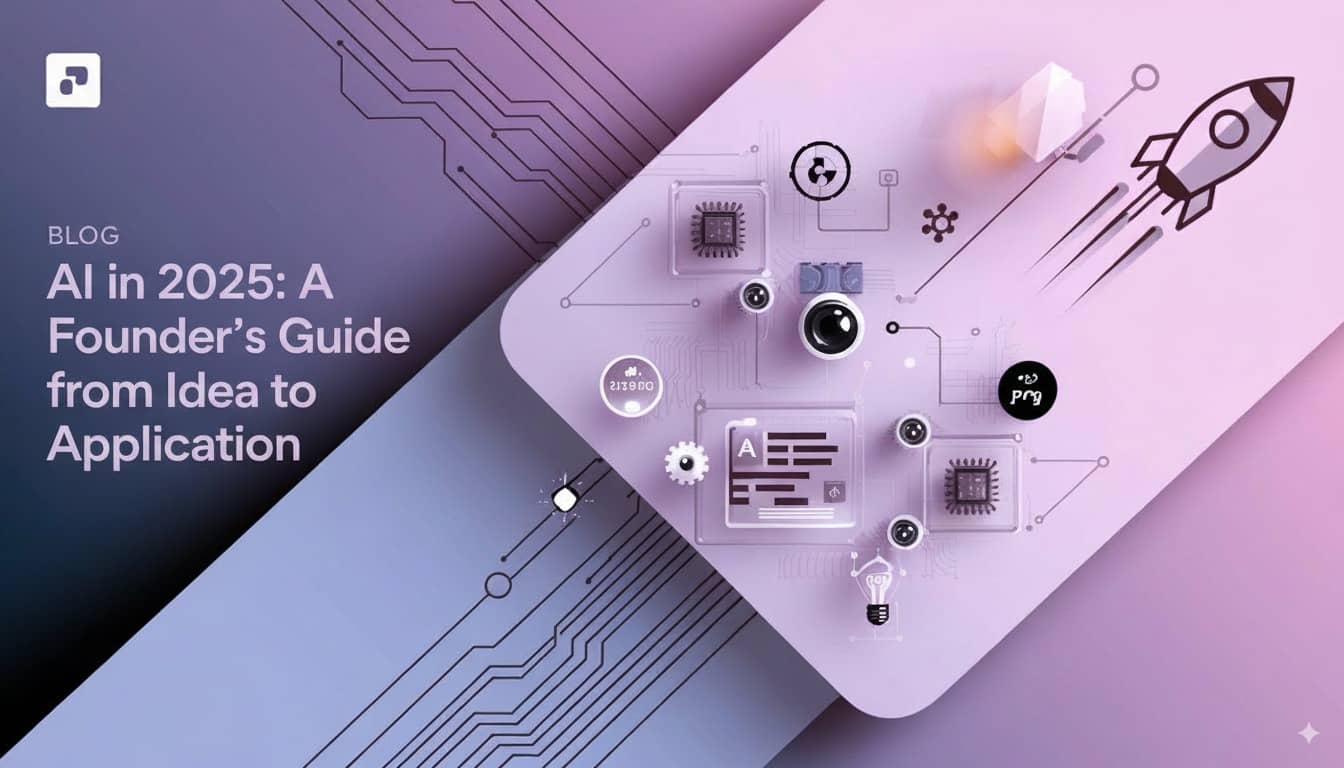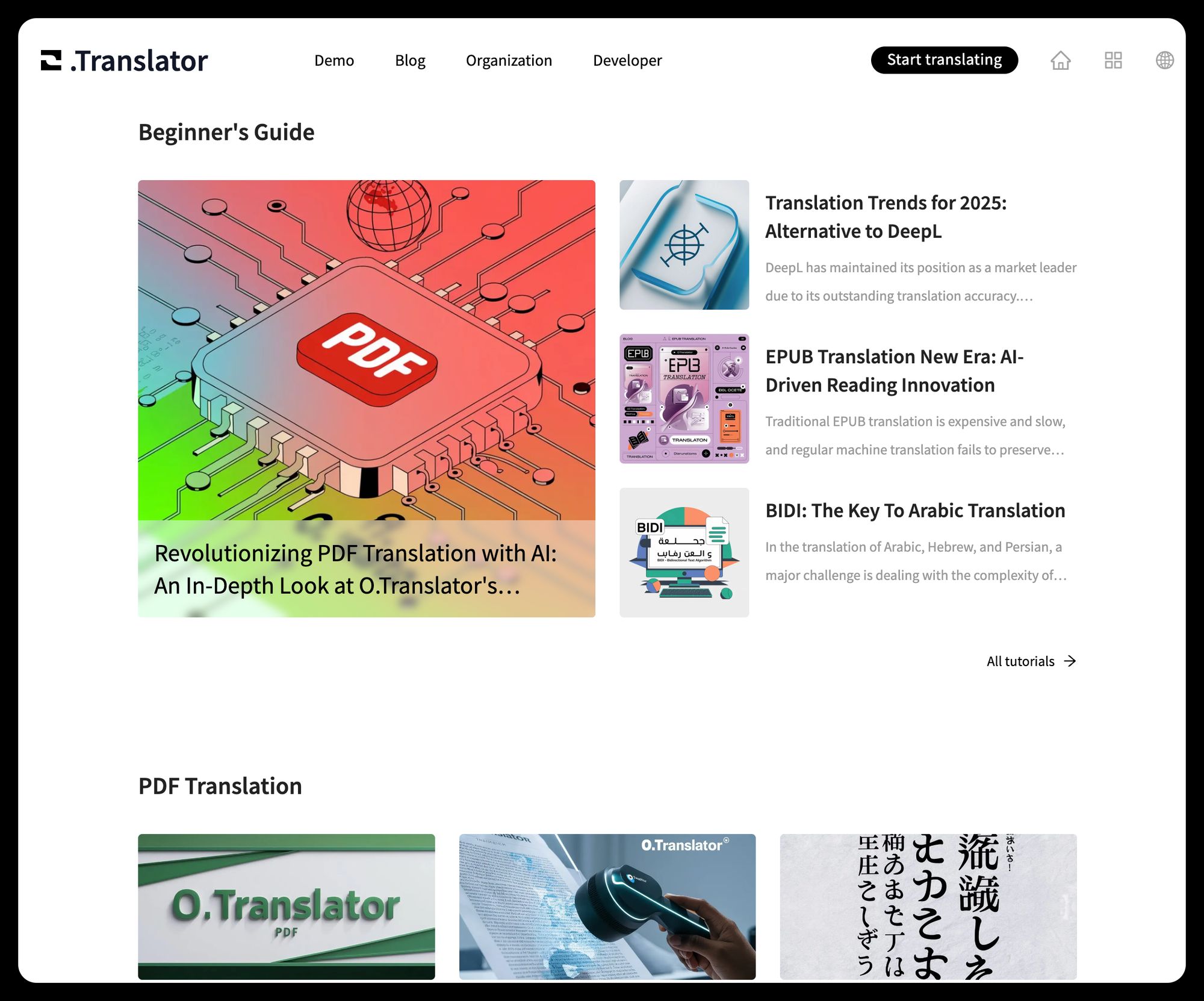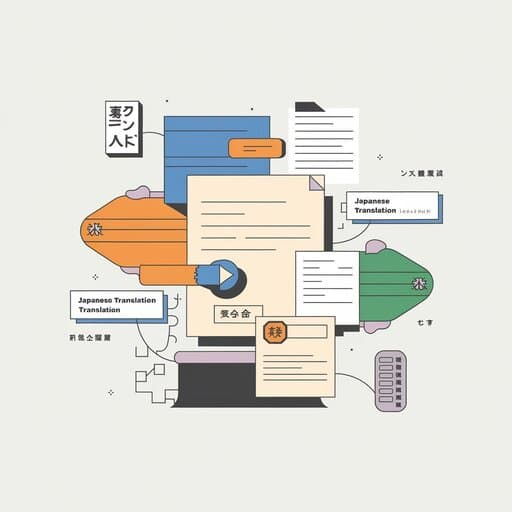AI in 2025: A Founder's Guide from Concept to Implementation

O.Translator
Feb 16, 2025

In 2025, how can small teams seize opportunities in the AI wave?
With the widespread adoption of models like DeepSeek, AI is transforming the world at an unprecedented pace. From coding and tutoring to industrial control, the disruptive impact of this wave rivals that of the mobile internet revolution. As you watch countless startups build impressive applications with AI, do you feel both excited and a bit anxious?
Don't worry about being a small team. Our O.Translator team also started from scratch. Since 2023, we've leveraged AI to translate millions of documents worldwide. We firmly believe that 2025 will be the breakout year for AI applications. Here are some of the pitfalls we've encountered and key lessons we've learned, which we hope will offer you genuine inspiration.
Survival Lesson One: Make cost control part of your DNA
For small teams, the starting point always comes down to one thing: survival. And the key to survival is an almost ruthless control of costs.
Small teams must live within their means.
Limited startup capital is our norm. The biggest mistake is investing everything before receiving positive feedback from the market. This not only creates tremendous financial pressure, but also gradually wears down the team's most valuable asset—its confidence—through repeated trial and error.
We firmly believe in a highly pragmatic growth flywheel: 'Small investment → Positive feedback → Increased investment → More positive feedback'
The first version (MVP) of O.Translator is the best example of this. By leveraging our technical strengths, we launched the website with virtually zero budget, then used payments from early users to gradually support ongoing product optimization and marketing. This steady and methodical approach not only helped us survive, but also enabled our user base to grow steadily.
Leverage your strengths and save money wisely.
What is your team best at—technology, operations, or sales? Clarifying this can help you save a substantial amount of real money.
- If your team is technically strong: Like us, you can develop your core systems in-house. This not only keeps costs extremely low, but also gives you greater control over your product and enables faster iteration.
- If your team excels at operations: Then don't rush to develop a standalone app or website. First, master existing platforms like WeChat, Douyin, Xiaohongshu, and TikTok. Build a loyal following through quality content before considering how to establish your own technical advantages.
Remember, never get caught up in areas you're not skilled at during the early stages. That not only burns money, but also wastes precious time.
From Zero to One: Cold Start and Growth Strategies for Small Teams
Once you have a product, how do you find your first group of paying users?
Cold Start: Standing on the Shoulders of Giants
In the early stages, creating your own content rarely generates significant traffic. The smartest strategy is to establish a presence in places that already have massive traffic and high authority.
- Domestic platforms: Zhihu, Xiaohongshu, and Bilibili are all excellent places for finding early users. By sincerely sharing your professional insights in these spaces, you can quickly attract highly targeted early adopters.
- International Platforms: Looking to go global? Sharing your voice on Medium, Reddit, and Quora can rapidly increase your brand's visibility overseas.
Many of our early core users came from several in-depth articles we published on Zhihu and Medium. These seed users are truly invaluable—not only did they validate our product direction, but they also offered a wealth of sharp, actionable suggestions for improvement.
Regarding advertising (such as Google Ads), our advice is to wait until your product is well-polished and your payment process is fully operational before considering it. Spending money to acquire users in the early stages is rarely cost-effective.
Content Marketing: Build Your Own Traffic Base
Once you’ve gained some visibility on major platforms, it’s time to establish your own official blog. This becomes your true traffic asset.
- Embrace SEO and welcome free traffic: A blog is the core foundation for attracting organic search traffic. We took advantage of AI-assisted SEO optimization, carefully planning everything from keyword selection to content structure. Want to systematically learn SEO? You can start with the official Google starter guide. We have always maintained a human-led approach to content, using AI only to assist with refinement. We believe that professional depth and genuine sharing are the ultimate keys to retaining users.
- Deep dive into long-tail keywords: Don’t just focus on those highly competitive popular terms. Explore more specific long-tail keywords related to your core business. For instance, we built on the core theme of 'document translation' to expand into more targeted scenarios, such as 'PDF translation with formatting intact' or 'EPUB eBook translation'. These keywords face little competition, but user demand is very clear, and the conversion rate is exceptionally high.
- Don't overlook the power of video: Two months ago, we launched a YouTube channel primarily to share translation tutorials and showcase our results. Although traffic is still limited, it serves as an intuitive 'product manual' and is highly effective in building user trust. If your business is closely connected to everyday life, then TikTok and short video platforms are absolutely essential territories to claim.

Say No to 'Wrappers': Why Should Users Pay for Your AI Product?
Frankly, many current AI applications are simply 'wrappers' that call large model APIs. With such products, why should users choose you over a similar but cheaper alternative? You must deliver extra value.
So, what is our 'extra value'?
O.Translator’s translation capabilities do rely on leading models like GPT and Gemini, but that’s only the tip of the iceberg. Our core strengths lie in: deep technical expertise and outstanding service beyond AI.
- Professional technical barriers: AI handles the translation, while we take care of everything else. We support over 30 file formats and are industry leaders in PDF layout restoration, OCR recognition, and even translating EPUB e-books up to 500MB. This is our true competitive moat. Interested in how we optimize translation quality by comparing different AI models?
- Direct communication with users: At O.Translator, any user can reach our core developers directly via Email or Discord. This means we can respond to issues quickly and receive the most genuine user feedback right away. The trust built through this direct communication is something large companies can hardly replicate—and it's the secret behind our exceptionally high repeat purchase rate. As a small team, we must play to our strength: agility!
Focus on the core—don’t get distracted by 'creative' ideas
Brainstorming always brings up countless 'brilliant' ideas, but we must learn to exercise restraint and constantly ask ourselves: 'Will this improve our core experience—the quality and convenience of document translation?'
- Developing a glossary, improving post-editing, and adding free previews? Absolutely! These are core requirements and top priorities.
- Adding speech extraction and document format conversion? These are nice-to-have features that add value, but they're not essential and can be scheduled for later.
- Switching to a subscription payment model? This might increase short-term revenue, but it doesn't significantly enhance the translation experience and could even deter one-time users, so it should be the lowest priority.
By continuously filtering and prioritizing in this way, we ensure that all valuable resources are focused where they matter most.
The 'first-mover advantage' isn't as daunting as it seems—how can latecomers catch up and surpass the competition?
Do you feel a bit intimidated seeing industry giants already entering the field? In fact, there's no need to be.
Recognize the limitations of first-mover advantage
Clayton Christensen pointed out in 'The Innovator's Dilemma' that large companies often miss new opportunities brought by disruptive innovation because they cling to their established business models and customer bases.
This is exactly where small teams have an opportunity. We can be more agile and experiment with niche areas that big companies overlook or are reluctant to try, carving out our own space through differentiated competition and lower costs.
Identify your unique strengths
So, don’t just focus on what big companies are doing. Instead, ask yourself:
- What is my unique advantage? Concentrate on the area where you excel, and refine it to the highest standard.
- How can I stand out? We chose 'complex document processing technology' as our breakthrough, and built our technical moat around it.
- How can I stay agile? Stay highly attuned to market feedback, iterate rapidly, and move forward in small, fast steps.
As long as you keep optimizing your product, strictly control costs, and consistently receive positive user feedback, your product can develop a healthy growth flywheel and establish a solid foothold in the market.
Final Thoughts
The above is the true growth story and hard-earned lessons of the O.Translator team over the past year. If you’re also looking to do something with AI, our single piece of advice is: Take action now!
Stick to the principles of cost control and focusing on your core strengths—quickly build your MVP, and then boldly launch it to the market to let users put it to the test. Remember, in the AI era, a perfect idea will never beat fast execution. Only by taking the first step will you have the opportunity to iterate and evolve.


